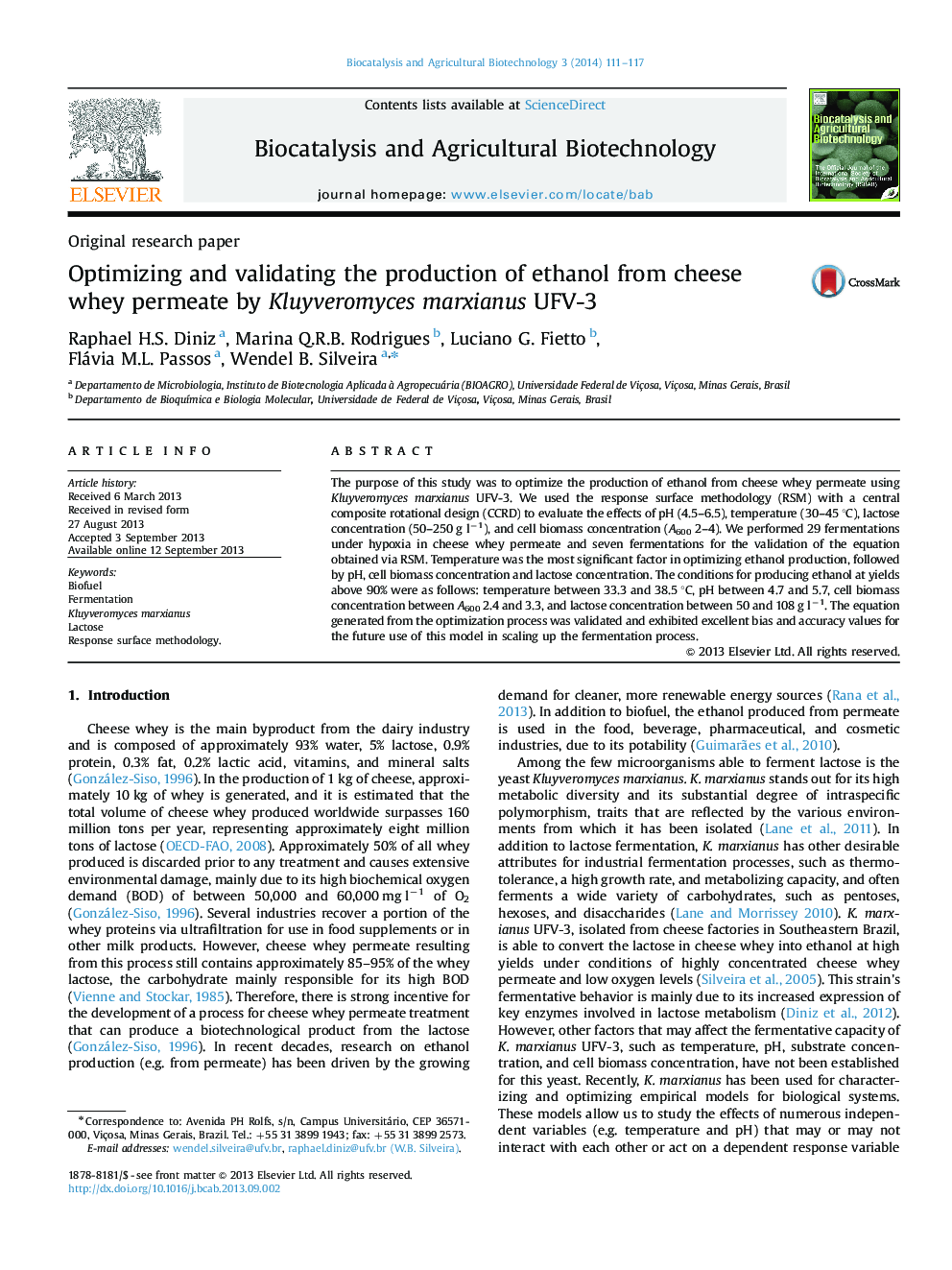| Article ID | Journal | Published Year | Pages | File Type |
|---|---|---|---|---|
| 2075495 | Biocatalysis and Agricultural Biotechnology | 2014 | 7 Pages |
The purpose of this study was to optimize the production of ethanol from cheese whey permeate using Kluyveromyces marxianus UFV-3. We used the response surface methodology (RSM) with a central composite rotational design (CCRD) to evaluate the effects of pH (4.5–6.5), temperature (30–45 °C), lactose concentration (50–250 g l−1), and cell biomass concentration (A600 2–4). We performed 29 fermentations under hypoxia in cheese whey permeate and seven fermentations for the validation of the equation obtained via RSM. Temperature was the most significant factor in optimizing ethanol production, followed by pH, cell biomass concentration and lactose concentration. The conditions for producing ethanol at yields above 90% were as follows: temperature between 33.3 and 38.5 °C, pH between 4.7 and 5.7, cell biomass concentration between A600 2.4 and 3.3, and lactose concentration between 50 and 108 g l−1. The equation generated from the optimization process was validated and exhibited excellent bias and accuracy values for the future use of this model in scaling up the fermentation process.
